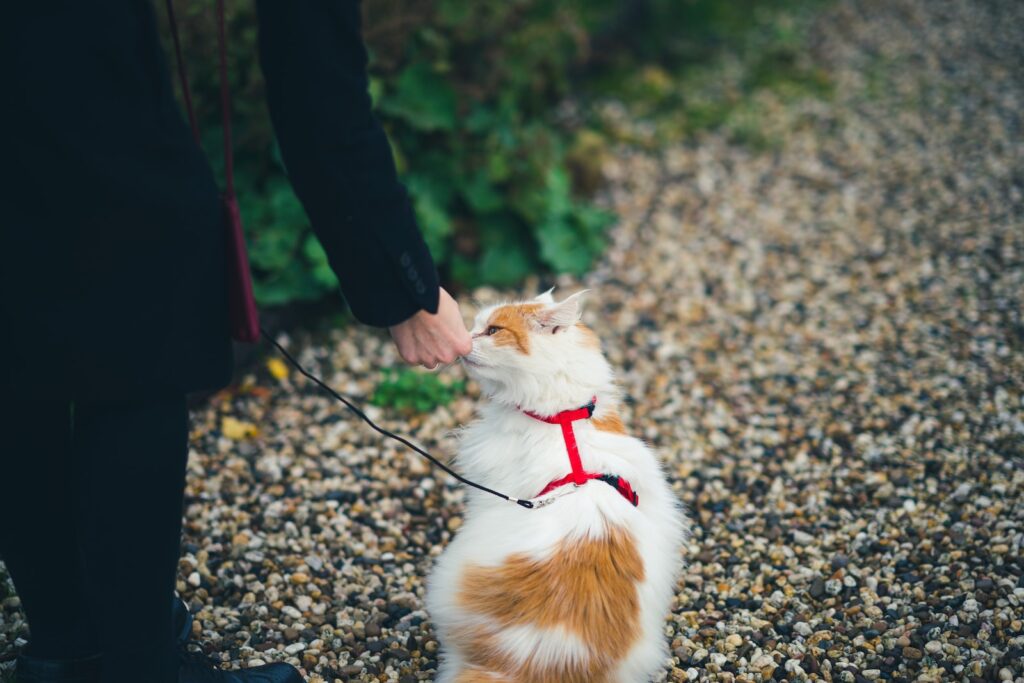There’s no doubt that cats are among the most independent creatures out there. They love to explore their surroundings and often don’t respond well when asked to do something they don’t want to do.
That’s why training your cat can be so important – not only will they be more obedient, but they’ll also enjoy it! Here are a few tips on how to train your cat to be obedient.
The Different Types of Behavior Problems Cats Can Have

There are many different types of behavior problems cats can have, and training your cat to be obedient can be difficult. Here are some of the most common:
1. Urinating in inappropriate places: This is probably the most common type of behavior problem cats have, and it can involve any number of locations, from your furniture to the floor.
The best way to solve this problem is to teach your cat not to urinate in those places. You can do this by using a “time-out” room, withholding food or water when your cat urinates outside the designated area or using a litterbox that your cat has to use inside.
2. Destroying things: Cats are natural predators, and some may start to destruct things – such as furniture – out of boredom or frustration. You can teach your cat not to destruct things by providing toys and distractions, rewarding good behavior, and punishing bad behavior.
3. Jumping onto people: Many cats exhibit signs of being “dominant,” which may lead them to jump onto people in order to assert their position. You can discourage this behavior by making sure your cat gets plenty of exercises and socializing with other people and animals. You can also train your
How to Train Your Cat to Behave

There are a few things you can do to help your cat become obedient. Start by providing positive reinforcement when your cat follows your commands.
This means rewarding them with treats, petting, or verbal praise when they comply. If your cat doesn’t respond to positive reinforcement, try using some negative reinforcement, such as withholding food or playtime until they obey.
Don’t use punishment too often – it will only make your cat afraid and less likely to listen in the future. With patience and positive reinforcement, teaching your cat to behave will be a breeze!
The Basic Steps in Training Your Cat
Training a cat can be a fun and rewarding experience for both you and your pet. Follow these basic steps to get started:
1. Start with basic obedience commands like sit, stay, come, and down. Work on teaching these commands in a calm and consistent manner. If your cat is not responding to verbal commands, try using food rewards or toys as incentives.
2. Next, begin training your cat to use the litter box. Place some litter in the corner of the room where the box is located and give your cat some treats when it uses the box. Praise them lavishly when they do!
3. Teach your cat how to use the leash and collar. Start by attaching the leash to a sturdy post or tree branch and giving your cat some treats while they are nearby but not tied up. Once your cat is comfortable with being tethered, begin attaching the leash to its collar.
Again, provide rewards for good behavior and continue training until your cat understands not to pull on the leash when walking around outside.
4. Finally, teach your cat how to respond when called names or other verbal commands. Start by calling them by name in a calm voice from a distance of several feet.
Putting It All Together: A Step-by-Step Guide to Training Your Cat

If you’re looking to train your cat to be obedient, there are a few key steps you can take. This step-by-step guide will walk you through everything you need to know, from setting boundaries and making sure your cat understands what’s expected of them, to training methods and reinforcement techniques.
First things first: make sure your cat knows who’s in charge. If they understand that you are the one in control, they’ll be more likely to listen when you ask them to do something. Start by establishing clear rules and boundaries for your cat.
You need to set some limits on how much they can touch, how far they can roam, and what kinds of activities they can participate in. Be consistent with these rules and make sure your cat knows that breaking them will result in consequences (such as not being allowed inside).
Next, start training your cat using positive reinforcement methods. When they comply with your requests, offer them treats or toys in repayment. Be consistent with your rewards – rewards should only be given after your cat has followed the instructions perfectly.
Over time, you’ll be able to teach them new Commands using this same method – rewarding good behavior is an effective way to encourage repeat performances!
Conclusion
Training your cat to be obedient can be a lot of work, but it is worth it in the end. By following these simple steps, you can teach your cat not to beg and not to scratch furniture, among other things. Remember that patience is key – if you are consistent with your training methods, your cat will eventually learn how to behave appropriately. Good luck!
